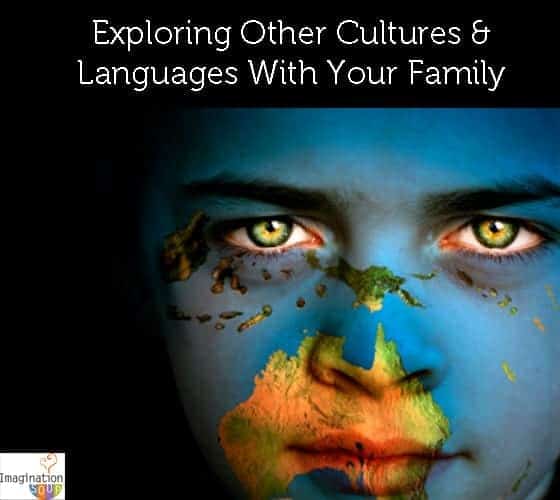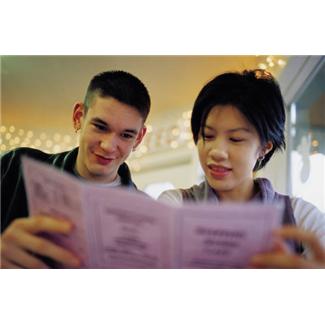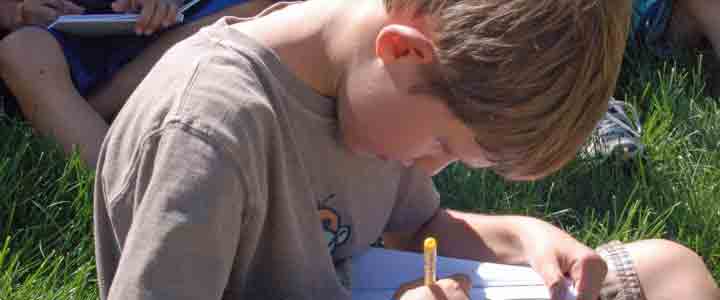Exploring Other Cultures and Languages With Your Family
This post may contain affiliate links.
by Karen Nemeth, Ed.M., Author of Many Languages, One Classroom: Teaching Dual and English Language Learners and Founder of Language Castle LLC
When you think about exploring different cultures and languages with your family, I hope you aren’t imagining a scene where everyone is silently memorizing flashcards or sleepily repeating the days of the week over and over again. Discovering the diversity of your community and the world beyond should be active, fun, and fantastic!
Instead of making up lessons, follow your family’s interests. Some children enjoy the library – others focus on food – and some prefer sports – so go ahead and follow their lead. There are opportunities to learn new words, traditions and activities in all kinds of ways. Here are some examples:
- Watch a familiar family movie in another language with English subtitles. If you know the story, it’s easier to follow along with the new language. This works even better if you watch it without subtitles and create a great challenge for the whole family. Next – try acting out whole scenes in the new language.
- Visit the library and ask the librarians for help finding bilingual books, cds or videos.
- Look up the beautiful photographic children’s books about everyday life in different cultures such as Bread, Bread, Bread or Hats, Hats, Hats or Houses and Homes by Ann Morris.
- Plan a trip to a local ethnic restaurant – then look up the words in a bilingual dictionary or online and practice saying your order before you go. Bring back menus to add diversity to pretend play at home or school.
- Make a game out of catching each other every time one of you says a word that comes from another language, such as ‘bureau’ or ‘macaroni’ or ‘adios’. If you keep track, you’ll be amazed at how many other languages you know – then start looking up more words and phrases on line to spice up your conversations.
- Go to an online travel site to plan an imaginary vacation to another country – take a virtual tour of the sites and see how the landscape, the vehicles, the buildings and the people look similar to or different from what you find in your own surroundings.
- Stop by the local travel agent for brochures and information about a country that interests the whole family – or let each person collect their own information and make a scrapbook to share.
- Buy bilingual children’s books that contain language everyone can learn and use. Many come with CDs so you can hear the correct pronunciation. You can order books in over 40 different languages from www.LanguageLizard.com
- Find bilingual e-books and electronic games at www.analomba.com
- Borrow or buy some international music – and learn the dances that go with it. www.putumayo.com is one of the most well-known sources. Buy or make different musical instruments too.
- Find a local cultural festival or dance performance or concert and dive right in!
- Visit an art gallery or museum exhibit to see through the eyes of people from different cultures.
Whatever path you take to explore other languages and cultures, make sure it appeals to every member of your family. The goal should be to support everyone’s learning in a positive way – and to have fun!
Bio: Karen Nemeth, Ed.M. is an author, presenter and consultant. Follow Karen on Facebook and Twitter. Her book, Many Languages, One Classroom, is available from Gryphon House.
What are your favorite ways to explore culture and languages?
What ideas of Karen’s do you want to try?

KEEP READING
Positive Character Traits in Children’s Books










Karen,
Beautiful post and love the ideas you have shared – practical, interesting and enriching!
Incidentally, I too write a post about creating a multi-cultural learning environment for our children.
You may read and share your thoughts about it here:
http://mommylabs.gorgeouskarma.com/art_craft_projects_kids/growing-up-in-a-multi-cultural-learning-environment/
I make my kids say please and thank you in every ethic restaurant that we know how to say those words in: Spanish, Chinese, Korean, Japanese, French, German … you’d be surprised how many languages you can drum up with just those two phrases.
That being said, my kids have also been studying Mandarin Chinese and Spanish with a tutor at a very young age. I blog on trying to keep them exposed here at Introducing Foreign Languages To Your Kids (Mandarin Chinese and Spanish) here at http://www.pragmaticmom.com/?p=1386
It’s the materials and tips and tricks that worked for me. Hope it’s helpful to you too!
Love this post, Karen. All of these ideas are wonderful ways to expose your child and yourself to new cultures and languages. Something that would augment all of the above is making friends with and/or mingling with one or more families that belong to a different culture. Although books, CDs and movies are fantastic resources, actually being part of a cultural event or celebration and experiencing the little day to day details of another culture can broaden one’s interest and knowledge of the culture significantly. For instance, just observing and learning the practices around say, Hanukkah or Diwali by celebrating the occasion with a Jewish or Indian family can teach us a lot about the cultures. So, if there are kids of different nationalities or religions in your child’s class or you know a coworker whose culture and background is different from yours – that should be all the more motivation for us to go out our way to make friends and express genuine interest in learning more about that culture. Unfortunately, what I have seen happen more often than not, is that we tend to associate ourselves with people of similar interests and backgrounds – may be it just feels more natural and comfortable. But, we’ve got to make it a point to break out of the mold at least occasionally so we can expand…Thanks again for throwing light on this important aspect of growing as a family with your post.
Wonderful ideas! My kids really enjoy watching movies in other languages, eating foods from other cultures, and reading/hearing children’s books in other languages. As a language teacher, I also enjoy the International Digital Children’s Library–http://en.childrenslibrary.org/–and there are iPhone/iPad apps, too!
Living in Montreal gives our family a chance to explore other cultures. We read books about other cultures, set in other cultures, or in different languages. (We speak 3) We also visit the museum or other in-town events that expand our children’s world. Great post!